| Day |
Plan |
Overnight |
| Day 1 |
Land in Keflavik |
Keflavík |
|
Day 1
|
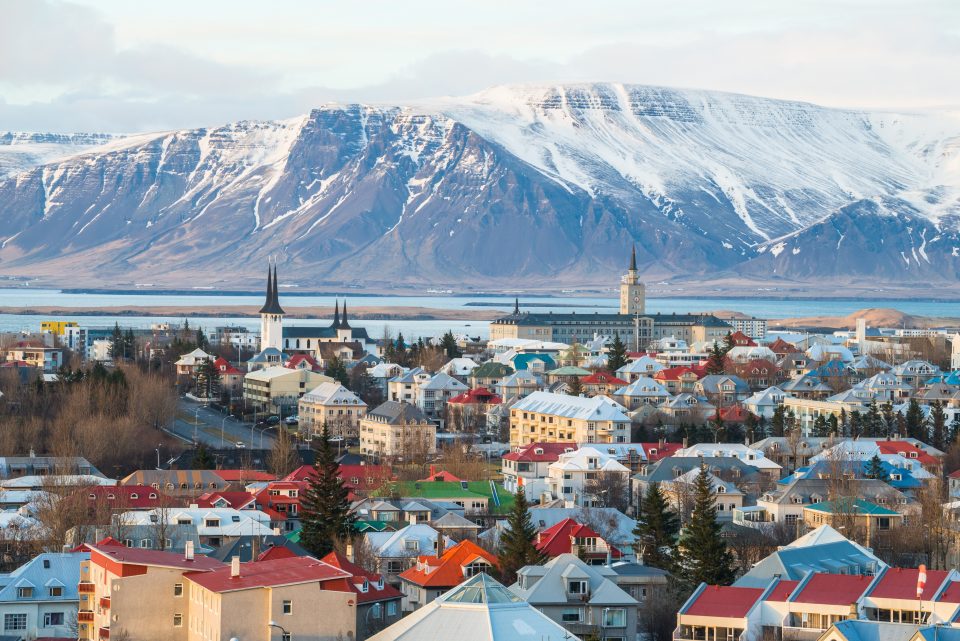
On arrival, proceed to pick up your rental car and head to your accommodation, check in and spend rest of the evening at leisure.
Keflavík is a town in the Reykjanes region in southwest Iceland.
|
|
| Day 2 |
Golden Circle Tour |
Selfoss |
|
Day 2
|
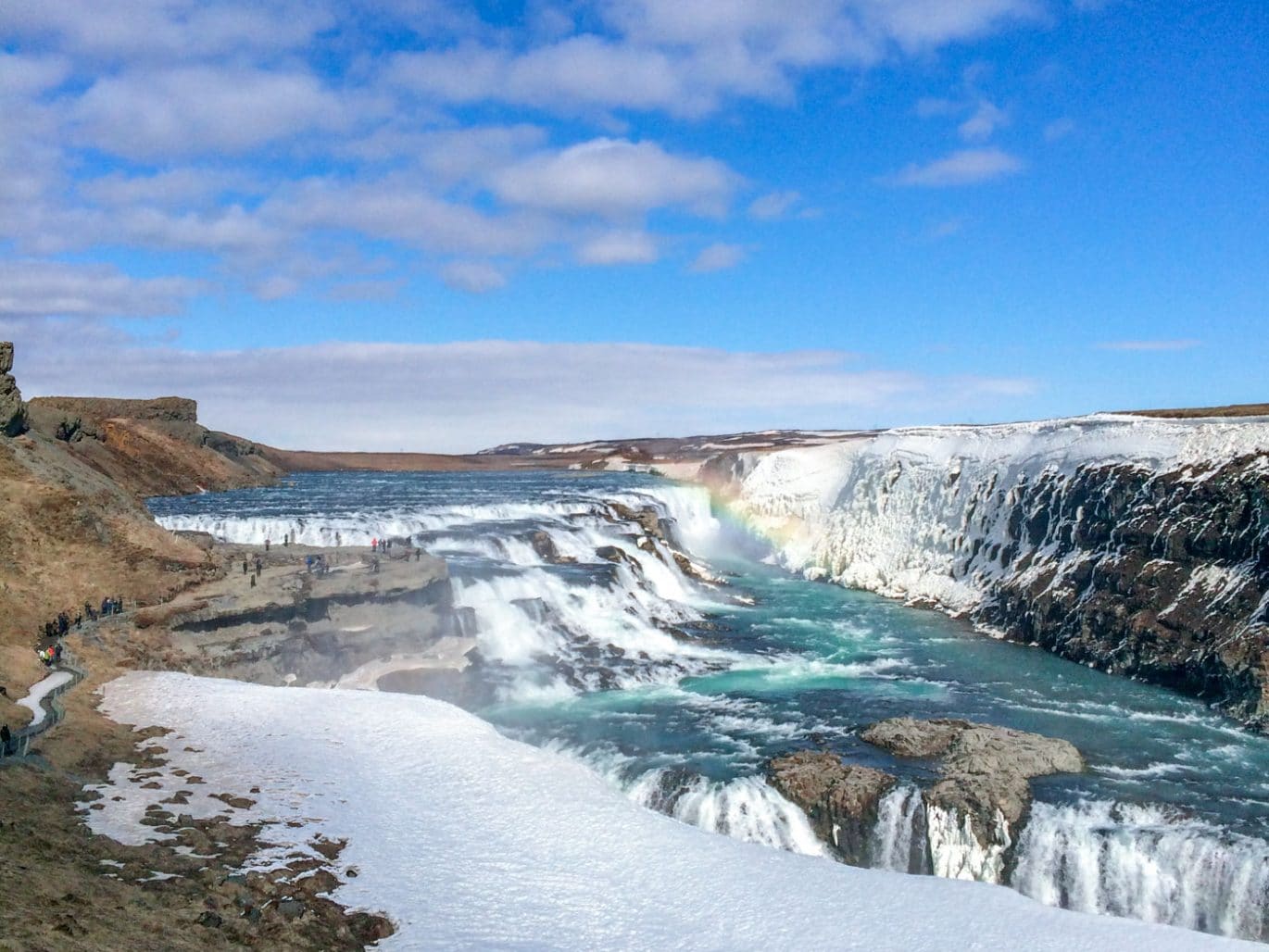
The Golden Circle is an extremely popular route in the South of Iceland. Featuring the magnificent Gullfoss Waterfall, Geysir Geothermal Field, and Thingvellir National Park. The Golden Circle is certainly one of Iceland’s most beloved tourist routes. It is sometimes referred to as “The Golden Triangle,” as it features three stunningly beautiful locations: an extremely powerful waterfall, a geyser which erupts frequently, and a UNESCO World Heritage site.
Thingvellir National Park is one of Iceland’s most significant historic and geological sites. Thingvellir was declared a national park in 1930.
The geothermal field around Geysir is a world-renowned area for geothermal hot springs. The Great Geysir is the hot spring that many other languages named all other spouting hot springs after. The geothermal field is believed to have a total surface area of approximately 3 km².
Most of the springs are aligned along a 100-meter-wide (328 feet) strip of land running in the same direction as the tectonic plate lines, from south to southwest. You can explore the hot springs, see the steam rising from the ground, and smell the sulfur in the air at this phenomenal natural wonder!
The next stop on the Golden Circle Route is the majestic Gullfoss Waterfall. It is, without a doubt, one of the most famous waterfalls in Iceland. The name Gullfoss directly translates to 'Golden Falls' or 'Waterfall of Gold.' It stems from the glacial river, Hvítá. The waterfall cascades stunningly down two huge steps (11 and 22 meters or 36 and 71 feet, respectively), descending into a deep gorge.
Gullfoss possesses immense power, which you can experience for yourself when you walk towards it. Here you can feel the spray of the glacial water on your face and, on sunny days, it is very likely that a rainbow will appear.
|
|
| Day 3 |
A day for exploring the Selfoss area |
Selfoss |
|
Day 3
|
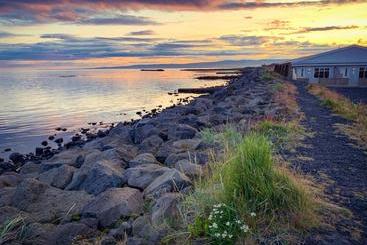
Selfoss is a town in southern Iceland on the banks of the Ölfusá river.
Visit the Lutheran church - Selfosskirkja, Ingólfsfjall, Ölfusárbrú bridge.
Then head to Explore Stokkseyri and Eyrarbakki - The coastline between the rivers Þjórsá and Ölfusá (25 km/15 mi) forms the outskirt of the great Þjórsárhraun lava field. Eyrarbakki and Stokkseyri provide easy access to the coastline as well as a path between the two villages where you can see the Atlantic Ocean and marvel at the fact the South Pole is directly to the south. This spot has a great view of both the ocean and mountains. Information signs can be found in both villages as well as an observation platform in Stokkseyri.
|
|
| Day 4 |
A day for waterfalls and volcanic beaches |
Kirkjubæjarklaustur area |
|
Day 4
|
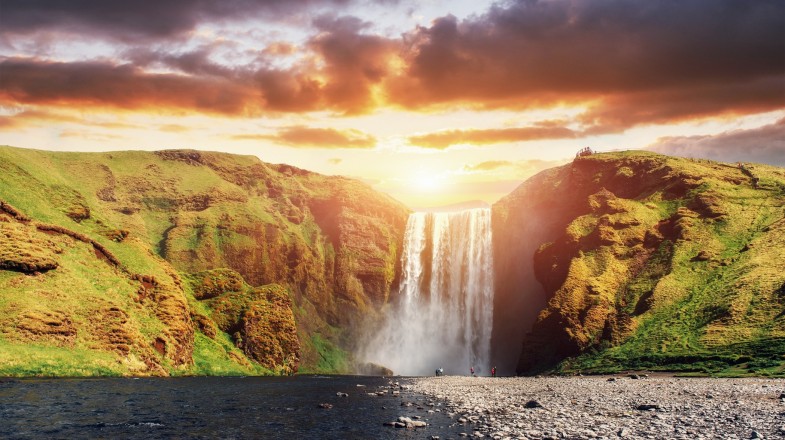
Head to the Kirkjubæjarklaustur area to explore Skogafoss, seljalandsfoss, Vik and Dyrholaey
Skógafoss waterfall has been my all-time favourite waterfall in Iceland since I first visited it as a child with my parents. Skógafoss is one of the biggest waterfalls in Iceland, with a drop of some 62 meters and a width of 25 meters, and you can walk right up to, but be prepared to be drenched. It is just overwhelming standing next to it.
Seljalandsfoss is a waterfall that can be fully encircled, situated on the South Coast of Iceland with a drop of 60 metres (200 feet). Due to the waterfall’s close proximity to the Ring Road and impressive natural features, it is one of the country's most famous and visited falls. Majestic and picturesque, it is one of the most photographed features in all of Iceland.
Vik is the Southernmost village in Iceland and the only place that offers services and supplies in between Skógar and the West bank of the Mýrdalssandur outwash plain. The population is gradually increasing due to tourism and its popularity is increasing as a picturesque stopover village.
The Dyrhólaey Peninsula is a 120-metre promenade famed for its staggering views of Iceland’s South Coast, as well as its historic lighthouse and wealth of birdlife. It is home to a rock arch of the same name. Dyrhólaey, which translates to Door Hill Island, is of volcanic origin and was once an island before joining up to the Icelandic mainland. In ancient times, passing sailors used to refer to Dyrhólaey as ‘Cape Portland’.
|
|
| Day 5 |
A day for glaciers and icebergs |
Jökulsárlón |
|
Day 5
|
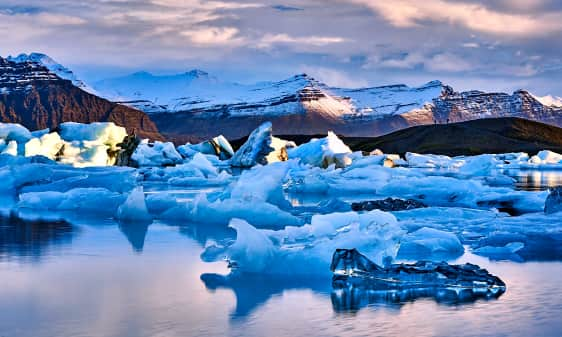
Head to explore Skaftafell, Vatnajokull national park, Jokulsarlon.
Scenic landscape, favorable weather conditions and a selection of hiking trails make Skaftafell an ideal destination for those who like to enjoy outdoor activities in Icelandic nature. Short and easy trails lead to waterfall Svartifoss and glacier Skaftafellsjökull, but for those who want to reach further out, the Morsárdalur valley and Kristínartindar mountain peaks are perfect in terms of distance and labour. Skaftafell is also the perfect base camp for those who seek to climb Iceland‘s highest mountain peak, Hvannadalshnjúkur.
Vatnajökull National Park is a protected wilderness area in south Iceland centered around Vatnajökull glacier. Defined by massive glaciers, ice caves, snowy mountain peaks, active geothermal areas and rivers, the region includes Jökulsárlón, a glacial lagoon with icebergs, and the Svartifoss and Dettifosis waterfalls. Skaftafell is the gateway to the park with a visitor center, campground and hiking trails.
Jökulsárlón is one of Iceland's natural crown jewels, and we've even started calling the nearby black beach our Diamond Beach, as the ice chunks lying on it resemble diamonds glistening in the sun. With a maximum depth of 248 metres, Jökulsárlón is Iceland's deepest lake. The icebergs in Jökulsárlón are composed of ice that is over 1,000 years old. The lagoon connects with the ocean and is therefore composed of a sea and freshwater mixture which causes its unique colour.
|
|
| Day 6 |
Head to Lake Myvatn area |
Lake Myvatn |
|
Day 6
|
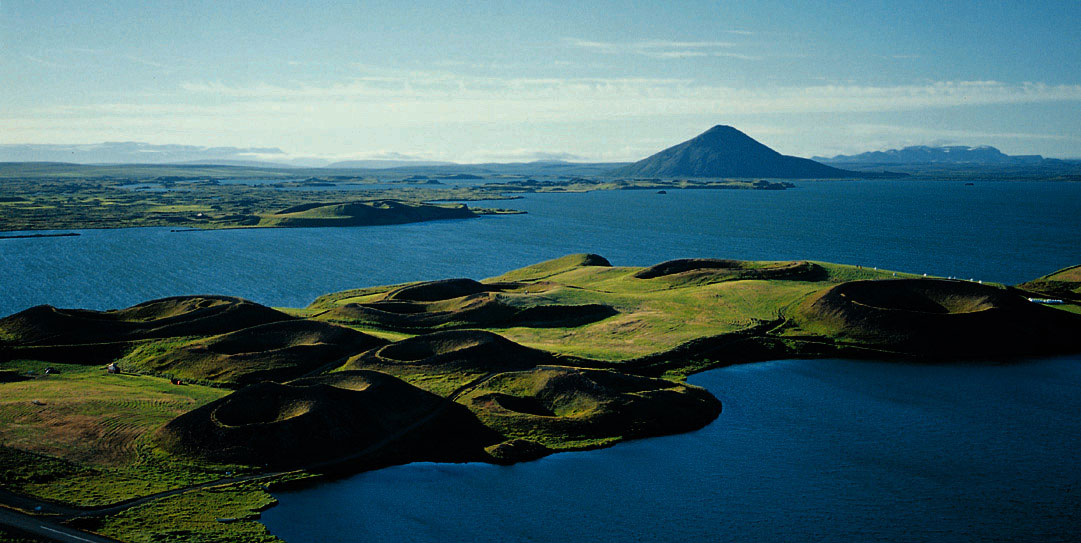
Mývatn is a volcanic lake in northern Iceland.
Things to do today include: Námaskarð, Skútustaðagígar pseudo-craters, Dimmuborgir lava formations and Krafla
Námaskarð - Geothermal area featuring a lunar landscape dotted with boiling springs & steaming fumaroles
Skútustaðagígar is the name of a row of pseudo-craters in North Iceland. The Skútustaðagígar Craters are found in the Lake Mývatn area, which is very volcanic, being near to the Krafla volcano system. The nature of the lake itself and the volcanism of the region both led to the creation of these unusual formations.
During an eruption, lava ran across the area of Skútustaðagígar, which at the time was swampy wetlands. The heat caused steam eruptions, which resulted in their crater-like shape.
Dimmuborgir - the Dark Fortress at Mývatn are a true wonder of nature and nowhere else to be seen in the world, i.e on dry land. Dimmuborgir consists of huge lava rock formations which make you feel like you stepped into another world - a world of fairy-tales.
The formation of these extraordinary lava cliffs and pillars stems from molten lava flowing over a pond in the eruption of Lúdentsborgir and Þrengslaborgir some 2300 years ago.
Krafla is a caldera, part of a greater volcanic system of the same name, located north of Lake Mývatn in North Iceland. It is one of the country’s most explosive volcanoes, having gone off approximately 29 times since the country was first settled.
|
|
| Day 7 |
A route through Husavik |
Lake Myvatn |
|
Day 7
|
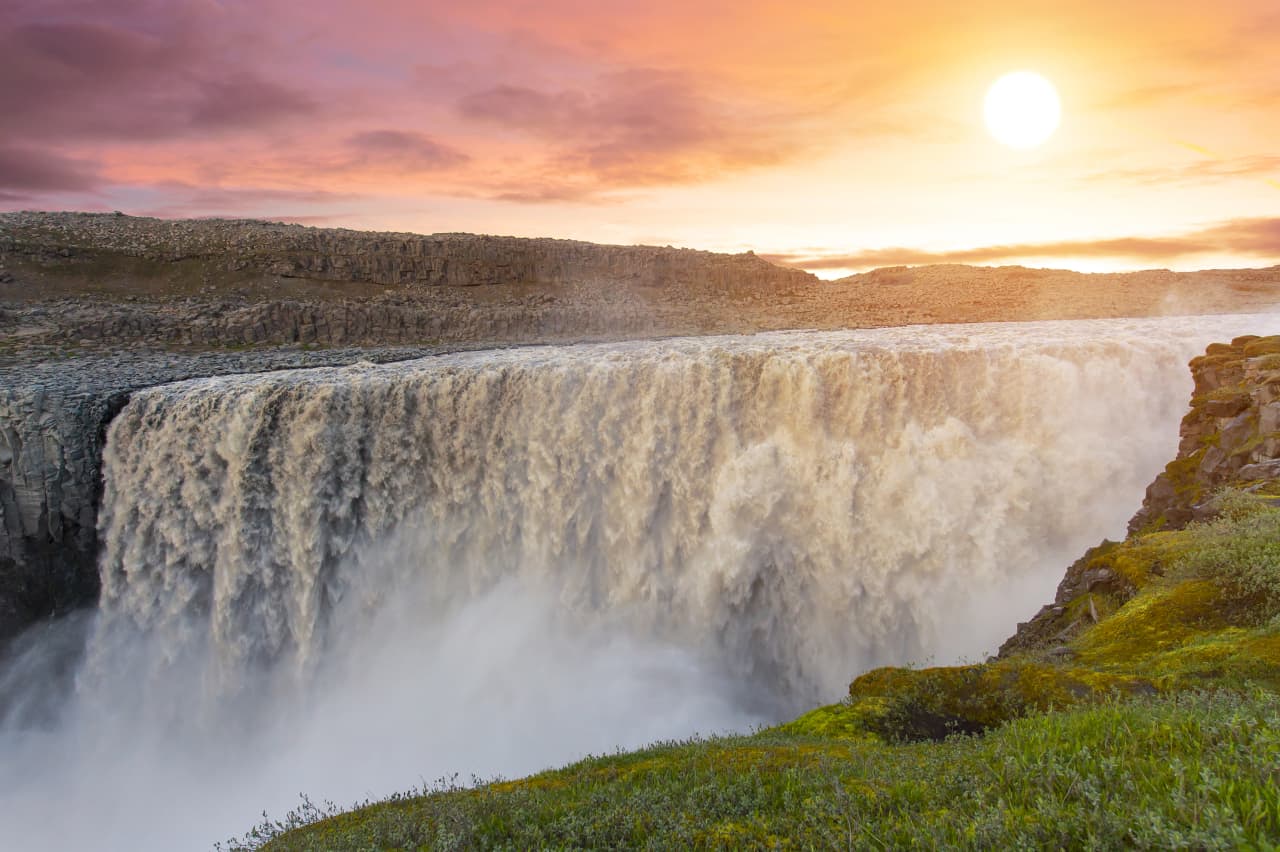
Today you will cover Dettifoss, Asbyrgi, Hljóðaklettar but driving through Husavik
Dettifoss is a waterfall found in North Iceland, said to be the most powerful in Europe. Dettifoss is fed by the powerful glacier river Jökulsá á Fjöllum which flows from the largest glacier in Europe, Vatnajökull.
North of Dettifoss, one can find the incredible canyon of Ásbyrgi. This canyon is shaped like a giant horseshoe and filled with verdant greenery. It is so perfectly formed and dramatic that it was originally believed to have been created by the stomping of one of the hoofs of the eight-legged horse of the Old Norse God Odin.
The ‘echo rocks’ or Hljóðaklettar, are a collection of basalt columns lying in every which direction to create unique formations and arched caves that are known to create eerie echoes and reverberations. Located at the entrance to Vesturdalur, in the Vatnajökull National Park, the Hljóðaklettar area has two marked hiking paths originating at the site’s parking lot. One (a path marked in blue) is a 1 km easy stroll that will take roughly 30 minutes, while the other (marked red) is a challenging circle around the area that is estimated to take 2 hours to complete.
|
|
| Day 8 |
Head towards Skagafjörður, stopping en route to sightsee |
Skagafjörður |
|
Day 8
|
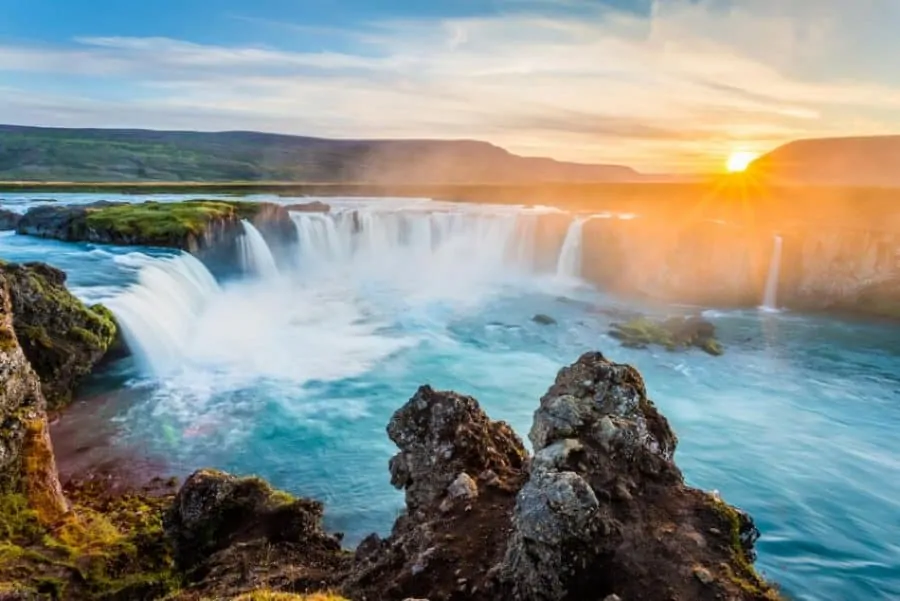
On your itinerary today you have Akureyri, Godafoss, and Hofsos thermal swimming pool.
Called “Iceland's Capital of the North”, Akureyri, the island’s second-largest city. The city is home to numerous museums, art exhibitions, designated green spaces and, of course, a local residence that shares much of the same passions and interests as Icelanders across the country.
Goðafoss waterfall is located in the river Skjálfandafljót in north Iceland, the fourth largest river in Iceland. It is one of the most spectacular waterfalls in the country. The name Goðafoss means either waterfall of the gods or waterfall of the 'goði' (i.e. priest/ chieftain).
The Hofsós Swimming Pool is fast becoming one of the best known pools in Iceland as well as the most popular tourist attraction in Skagafjörður. The pool is one of the most scenic eternity-pools in Iceland overlooking the island of Drangey and the fjord.
|
|
| Day 9 |
Drive to Snæfellsnes peninsula |
Snæfellsnes |
|
Day 9
|
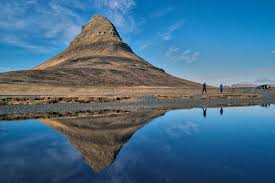
The Snæfellsnes Peninsula is a region in western Iceland known for its dramatic landscapes. At its western tip, Snæfellsjökull National Park is dominated by Snæfellsjökull Volcano, which is topped by a glacier. Nearby, a trail leads through lava fields to black-pebble Djúpalónssandur Beach. In Stykkishólmur fishing village, the 19th-century wood-frame Norwegian House is a regional museum with a craft shop.
Spend the day trekking through thee region.
|
|
| Day 10 |
Explore Snæfellsjökull National Park and Snæfellsjökull Glacier |
Reykjavik |
|
Day 10
|

Snæfellsjökull National Park is found on the tip of the Snæfellsnes Peninsula and is one of three National Parks in Iceland. It is named after its crowning glacier and volcano.
The Snæfellsjökull glacier lies on top of a volcano and its peak reaches 1446m. næfellsjökull became world famous after Jules Verne described it in his book of “A Journey to the Center of the Earth” as the starting point of the journey. Hiking or cross-country skiing on this glacier is some of the best options, which will create some of the most unforgettable memories and will challenge you for the whole day.
|
|
| Day 11 |
Reykjavik city tour and blue lagoon |
Reykjavik |
|
Day 11
|

Finally in the capital city, here are the top things to cover in the city tour:
Hallgrimskirkja, Harpa, Perlan, Sun Voyager, Icelandic Phallological, Laugavegur
Late in the evening, head for a trip to the Blue Lagoon. The Blue Lagoon is an outdoor spa that is open for rest and relaxation all year round. This hot spring was created a little help from humans, but it is filled with many types of healing elements that occur naturally. From the mineral-rich brackish water to the exfoliating mud, this spa offers rejuvenating treatments in forms that you’d never imagine.
|
|
| Day 12 |
Exit to India |
NA |
|
Day 12
|
Check out from your accommodation in Reykjavik in time to catch your flight back to India
|
|












